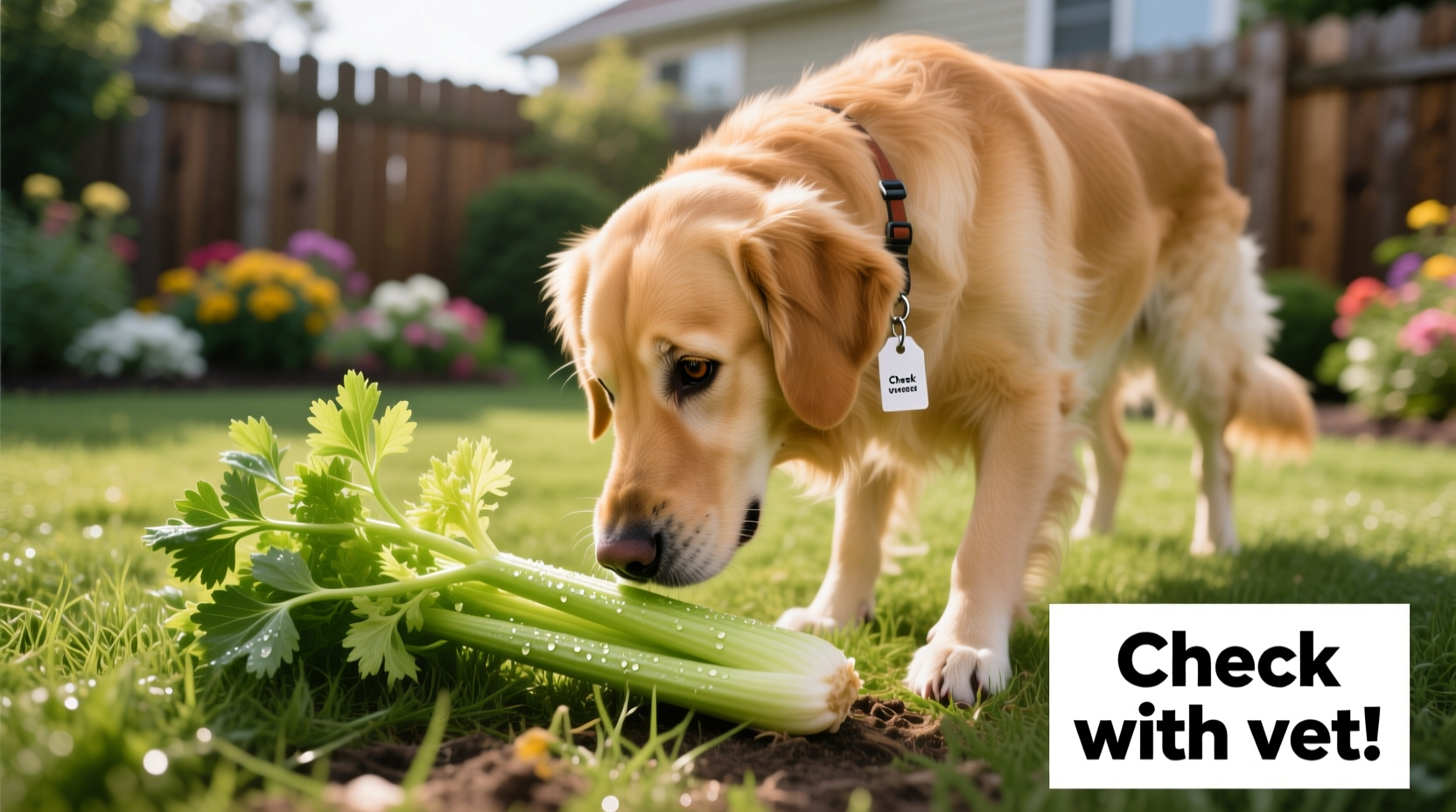As a concerned dog owner, you've probably wondered whether that crunchy stalk of celery you're snacking on could be shared with your furry companion. When your pup gives you those pleading eyes while you're munching on vegetables, it's natural to question: is celery bad for dogs? The good news is that unlike many human foods, celery isn't toxic to dogs and can actually provide some health benefits when prepared correctly and given in appropriate portions.
Immediate Concerns: What Happens If Your Dog Eats Celery Right Now?
If your dog just nibbled on a small piece of celery, there's no need to panic. Unlike grapes, chocolate, or onions which are highly toxic to dogs, celery doesn't contain any compounds that are poisonous to canines. The American Society for the Prevention of Cruelty to Animals (ASPCA) confirms that celery is not listed among common toxic foods for dogs.
However, the main concerns with celery come from its physical properties rather than chemical composition:
- Choking hazard - The fibrous, stringy nature of celery can be difficult for dogs to chew properly
- Digestive upset - Large quantities may cause gas or diarrhea in some dogs
- Obstruction risk - Whole or large chunks could potentially cause intestinal blockage
Health Benefits of Celery for Dogs: More Than Just Crunch
When prepared safely, celery offers several nutritional advantages for your canine friend. According to research published in the Journal of Animal Physiology and Animal Nutrition, vegetables like celery can provide valuable micronutrients that complement a balanced canine diet.
Celery contains:
- Vitamin K - Essential for proper blood clotting
- Potassium - Supports nerve and muscle function
- Vitamin A - Important for vision and immune health
- Hydration - Composed of 95% water, making it excellent for hydration
- Fiber - Aids in digestive health when given in appropriate amounts
Many veterinarians, including those at VCA Animal Hospitals, acknowledge that vegetables like celery can serve as healthy, low-calorie treats for dogs, particularly for overweight pets needing snack alternatives.

Safe Preparation Guidelines: Avoiding Common Mistakes
The way you prepare celery makes all the difference in whether it's a healthy treat or potential hazard. Follow these vet-recommended preparation steps:
- Wash thoroughly - Remove pesticides and contaminants
- Remove leaves - Celery leaves contain higher concentrations of psoralens which may cause photosensitivity in some dogs
- Chop into small pieces - Cut into ½-inch pieces to prevent choking
- Remove strings - The fibrous strings are difficult to digest
- Start with small portions - Introduce gradually to monitor for digestive upset
| Dog Weight | Safe Celery Portion | Frequency |
|---|---|---|
| Under 10 lbs | ½ teaspoon chopped | 1-2 times weekly |
| 10-30 lbs | 1 teaspoon chopped | 2-3 times weekly |
| 30-50 lbs | 1 tablespoon chopped | 3-4 times weekly |
| 50+ lbs | 2 tablespoons chopped | 4-5 times weekly |
When Celery Might Be Problematic: Important Limitations
While celery is generally safe, certain situations warrant caution or avoidance:
- Dogs with kidney disease - The relatively high potassium content may be problematic
- Puppies under 6 months - Their developing digestive systems may not handle fibrous vegetables well
- Dogs with history of pancreatitis - Consult your vet before introducing new foods
- Dogs prone to gastrointestinal issues - Celery's fiber content might exacerbate existing conditions
The Merck Veterinary Manual notes that while vegetables like celery are generally safe, individual dietary needs vary significantly based on breed, age, health status, and existing medical conditions.
Better Vegetable Alternatives for Dogs
If you're looking for safer or more beneficial vegetable options for your dog, consider these alternatives that provide similar benefits with fewer risks:
- Cucumber - Higher water content, easier to digest, lower fiber
- Carrots - Rich in beta-carotene, can be given raw or cooked
- Green beans - Excellent low-calorie option, can be given steamed or raw
- Blueberries - Packed with antioxidants, appropriate for most dogs
Remember that treats and human foods should never exceed 10% of your dog's daily caloric intake. The primary nutrition should come from a complete and balanced commercial dog food or veterinarian-approved homemade diet.
What to Do If Your Dog Ate Too Much Celery
If your dog consumed a large amount of celery, here's what to watch for and when to seek help:
- Mild cases (small amount swallowed): Monitor for 24 hours for signs of digestive upset
- Moderate cases (several stalks): Watch for vomiting, diarrhea, or decreased appetite
- Emergency situations: Contact your vet immediately if you notice:
- Repeated vomiting or diarrhea lasting more than 12 hours
- Signs of abdominal pain (whining, hunched posture)
- Difficulty breathing or swallowing
- Lethargy or weakness
When in doubt about is celery bad for dogs in your specific situation, always consult your veterinarian. They can provide personalized advice based on your dog's health history and current condition.











 浙公网安备
33010002000092号
浙公网安备
33010002000092号 浙B2-20120091-4
浙B2-20120091-4